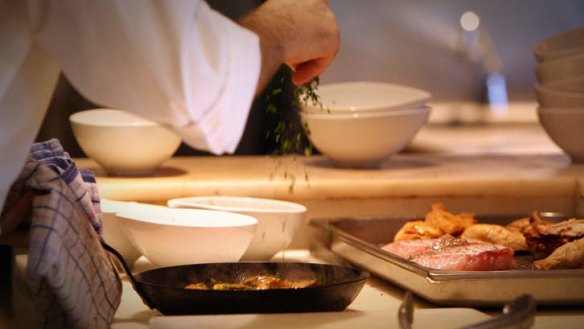Of course, your bill is high. Here's why...

CASUAL CONVERSATIONS CAN often take interesting directions. Recently, I was challenged by a friend who argued that the prices charged by top-end restaurants were unconscionable and that the owners of these businesses were gouging the public. Their rationale was that they could buy ingredients from a supermarket and a bottle of wine from a liquor store and put a really good meal on the table for $30, so how could a restaurant justify $200 a head for the food?
Working with top-level restaurants in my professional capacity, I have a good appreciation of restaurant economics and understand that far from gouging, top restaurants don't make a lot of money and many are struggling to survive, despite the prices they are charging. A well-run fine dining restaurant with normal cost structures will be lucky to make a 10 per cent profit.
There is a great deal more to running a fine dining restaurant than simply putting food on a plate. First, you have to provide a contemporary, well-equipped environment. You won't get much change out of $1 million for a conservative fit-out and I am aware of restaurants that have spent $5 million to $6 million before the doors were opened; that designer decor and all that shiny stainless-steel equipment in the kitchen doesn't come cheap. As with any business, part of your establishment costs have to be included in each transaction until they are paid off, which can take years.

Next, restaurants are usually located in high-profile locations where the rent can be extremely high. I have clients in the city centre who are paying more than $500,000 a year in rent, which can equate to 10 per cent or more of their income. As with the fit-out, the cost of rent has to be included in the price of a meal.
Then there are the staff costs - a typical restaurant at The Good Food Guide two-hat level may have 10 or more staff in the kitchen and another 10 or more on the floor, plus two in the office. Including on-costs (super, payroll tax etc) those staff range from $25 up to $70 an hour, and they're not just there for your visit. The kitchen staff have been in full swing ''prepping'' for six or seven hours before you arrive and the front-of-house staff have spent many hours setting up the restaurant, polishing the cutlery and glassware and engaging in ongoing training.
Wages in a top restaurant should be about 33 per cent of the restaurant income, but many high-profile restaurants are struggling to keep wage costs under control and I have seen them as high as 60 per cent. The further upmarket you go, the more skilled your staff have to be - and the more expensive they are to employ.
Then we arrive at the food itself. Top restaurants source premium produce from far and wide, often from small, specialist producers who charge according to the laws of supply and demand. While you might dive into your local supermarket and buy a piece of recently frozen fish or a piece of low-quality meat and consume all of it, the chef has to source first-class quality and absolute freshness and then throw quite a bit of it out.
A top-level restaurant can't serve a piece of meat with sinew or a piece of fish with discoloured flesh. By the time a chef trims that dry-aged piece of waygu and portions it carefully to look pretty in a perfectly proportioned serve, half of it can be gone. That whole fish can lose 70 per cent of the purchase weight to produce a limited number of plump, pristine fine-dining portions.
The ingredient cost in a fine dining restaurant should not exceed 33 per cent of the sale price of the dish, but that's pure theory at the moment. I'm seeing many restaurants that are really struggling to achieve this degree of tight control and at the same time produce food that is competitive at a high-market level.
There are also many other costs involved in running a restaurant - for example, they use a huge amount of energy - gas, electricity and often charcoal. Just as your household electricity bill is climbing rapidly, imagine the bills you receive when your stoves and ovens are running all day and you have 20 pieces of refrigeration equipment, plus a substantial amount of lighting. In addition they have cleaning costs, accounting fees, marketing and advertising and a raft of minor costs. The overheads involved in running a restaurant generally run in the range of 12 per cent to 15 per cent of turnover.
So, if you want to be waited on hand and foot, served premium produce in a sophisticated manner, in a plush environment, using expensive crockery, cutlery and glassware, you'd better be prepared to pay for it.
Tony Eldred has worked as a consultant to hospitality businesses since 1987.
Restaurant reviews, news and the hottest openings served to your inbox.
Sign up